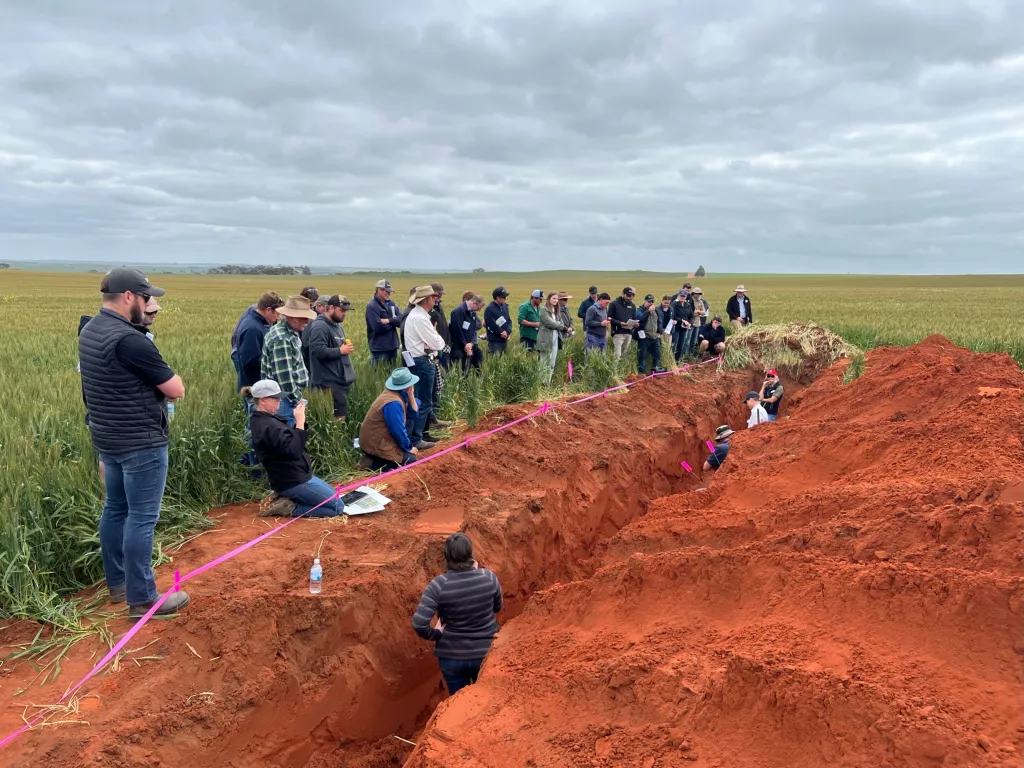CSBP: Gauge nutrient uptake with plant sampling
By Bridget Watkins, CSBP Agricultural Officer
With some good rain finally making an appearance across the growing region, crops are coming up, and pastures are recovering. This brings the opportunity to carry out CSBP NUlogic Plant Analysis to assess crop and pasture health by analysing the current concentration of nutrients in the plants.
Benefits of plant testing
Plant tissue testing has multiple benefits. It allows growers to assess the status of critical nutrients and address deficiencies before they impact production and yield. Years of field trials have shown that marginal nutrient levels can restrict final yield to 60-80% of the target.
Plant sampling versus soil sampling
Plant sampling is typically more reliable than soil sampling, providing detailed information across a broader range of nutrients and assessing the actual plant status of trace elements. Results from plant sampling provide a real-time gauge of nutrient uptake and can indicate the presence of nutrient deficiencies before visual symptoms appear.
The majority of limiting macronutrients, including nitrogen (N), potassium (K) and sulfur (S), can be addressed in-season if discovered early enough. However, nutrients such as phosphorus (P) need to be supplied sufficiently before germination.
Timing is important. Plant sampling early, such as at early tillering in cereals and 4 – 6 leaf in canola, is the ideal timing as this allows time for nutritional deficiencies to be rectified in-season. However, sampling later than this can still provide valuable insight and should not be disregarded.

What can be sampled?
Plant sampling is not limited to cereals; lupins, pulses and pastures can be tested to assess nutrient uptake. Stem samples of lupins are often analysed to provide insight into manganese (Mn) status in season, as Mn deficiency can result in split seed. Assessing pasture nutrition and composition determines the quality of feed on offer to livestock, as volume alone is not sufficient.
When diagnosing potential nutrient deficiencies once symptoms appear, collect paired samples (both affected plants and healthy-looking plants). Comparing these samples provides a clearer understanding of the specific nutrient limitations in the unhealthy plants.
It is also worth considering nutrient interactions: if one nutrient is limiting, it is likely preventing the plant from effectively utilising the remaining nutrition available. For example, K deficiency can limit the crop’s response to additional N applications. Ensuring balanced nutrition is critical for promoting healthy crops and pastures.
If growers have altered their seeding fertiliser application placement and/or rate from previously used practices, then plant sampling can be utilised to assess crop nutrition. Growers can then adjust their remaining fertiliser application program based on the in-season nutrient status.
For example, if P was banded at seeding rather than top-dressed as in previous seasons, the uptake of P by the crop is likely to be more efficient and plant sampling can help to confirm the benefits of banding.
Given the limited 2024 summer rainfall across the growing region, it is likely that soil testing conducted before seeding was not able to provide a full insight into nitrate levels as mineralised N was limited. Tissue testing in season allows growers to see how the crops are performing and if N or other nutrients are limiting. Marginal or reduced uptake of certain nutrients can help determine which fertiliser products best suit the crop and pasture requirements for the remainder of the season.
Finally, fertiliser strategies can be refined to match crop requirements. For example, if plant sample results show that S levels in a canola crop are sufficient, a high-S product may not be needed. The fertiliser budget can then be redirected to other nutrients that better meet the crop’s needs for the season.
Plan your sampling today
Plant samples can be sent to the CSBP Soil and Plant Analysis Laboratory in Bibra Lake, where the skilled lab team will perform a comprehensive suite of analytes with flexible testing options to target specific nutrients if required.
CSBP Account Managers will assess the results for the relevant crop or pasture, and use DecipherAg to map out deficient areas or prepare variable rate application, optimising fertiliser use. They can also advise on the best products to meet current and future crop and pasture requirements.
We recommend getting in touch with your local CSBP account manager to organise your plant sampling and get you the results you need to ensure your crops and pastures are getting the nutrition they require.
















